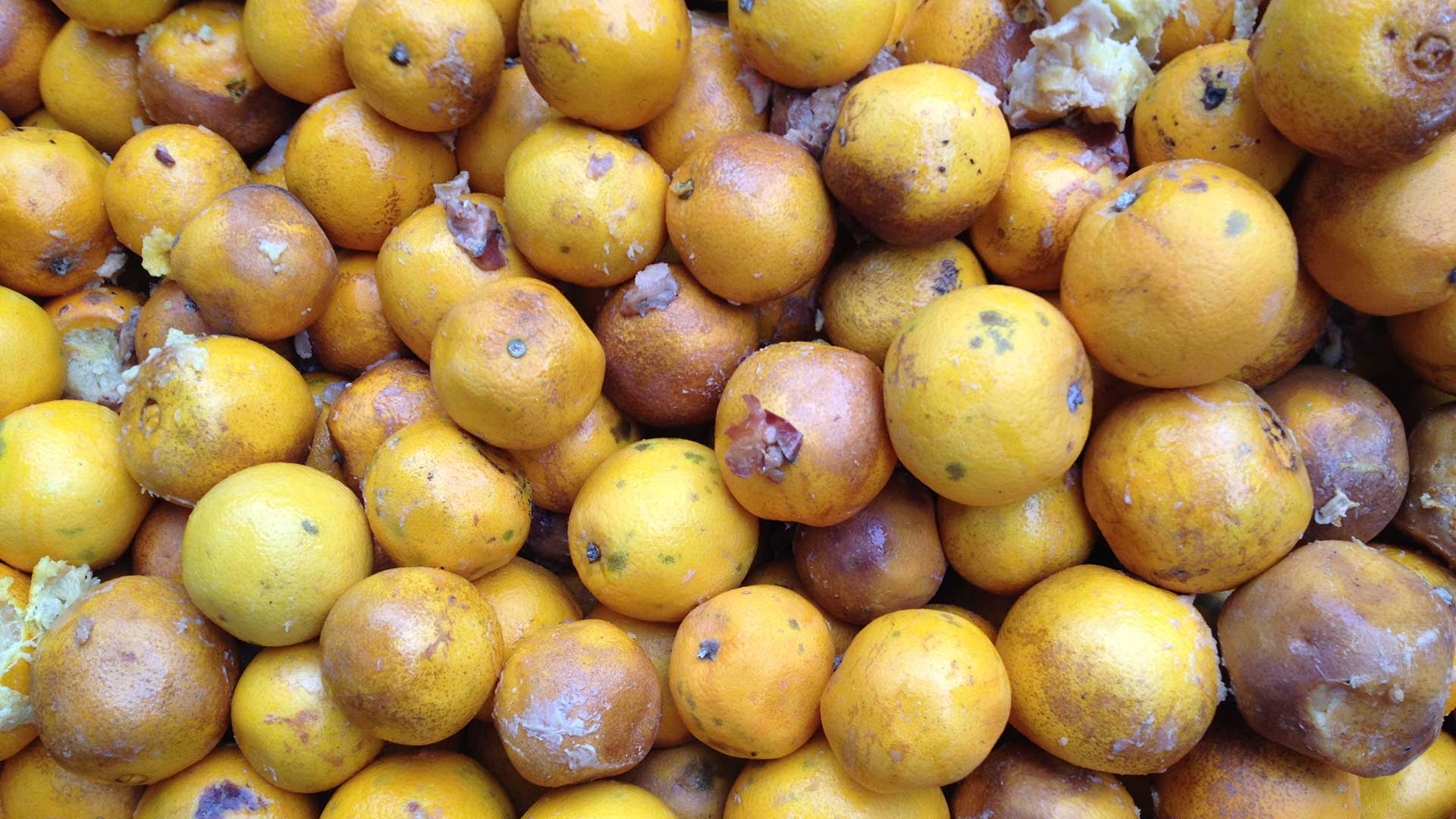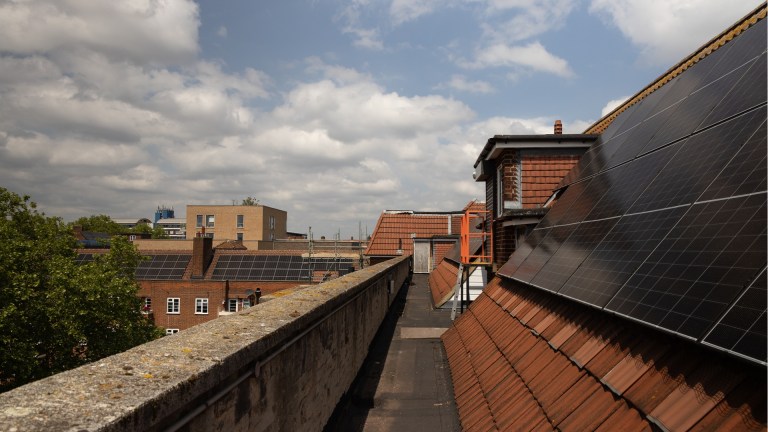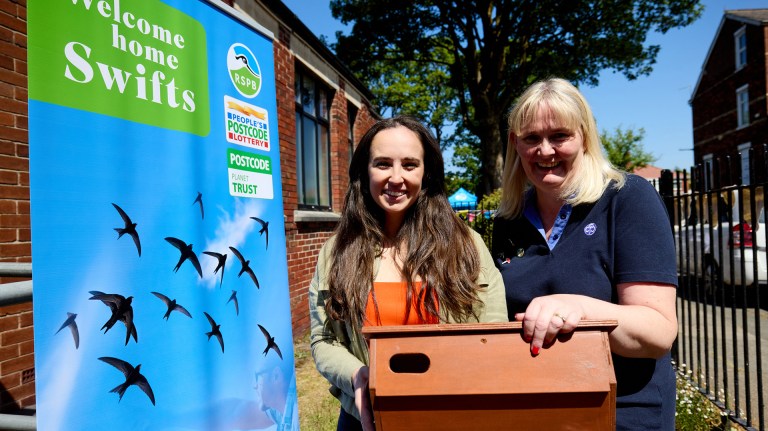“The aim is to harvest Class I fruit only because the costs associated with Class II production means there is not a satisfactory margin – you’d be making a loss,” Barlow says.
So it’s all about class?
“First of all, there are specifications laid down by the European Commission, and on top of that supermarkets – where 80 per cent of dessert apples are sold – may have their own slightly higher specifications. Shape should be reasonably consistent, size, colour, firmness. Fruit will not be harvested until the change of starch into sugars has reached a satisfactory level.”
Carefully picked fruit goes straight to the packhouse where the field heat is removed (by cooling systems) to stop the apples maturing. They are tipped into canals of water and conveyed very gently onto a grading system. Cups scoop the apples from the water and each apple’s size and weight is monitored while cameras measure the colour. Fruit is diverted into appropriate channels for packing, ensuring that each one looks identical to its neighbours.
“We would always recommend that people buy their fruit on the basis of taste but realistically – whether we like it or not – consumers are initially attracted by appearance,” Barlow continues. “Fruit has to have strong, vibrant colours and a total absence of marking or bruising. The supermarkets often get blamed for imposing high standards, the reality is that consumers will just not buy fruit that does not meet that criteria.”
In 2003 the English industry supplied 23 per cent of the market, today it’s up to 38 per cent.“There’s been a real renaissance in the English apple industry,” Barlow beams. “But we face massive competition from exotic fruits that years ago weren’t available, and soft fruits like strawberries that you can buy throughout the year.
Advertising helps fund Big Issue’s mission to end poverty
“We also face huge competition from confectionary and I know it sounds crazy but the Lottery is a competitor to us – anything that competes for disposable income. So we have to make sure what goes on the shelf is going to satisfy the consumer.”
The apple harvest in the UK takes place between July and October, depending on the variety of apples. Any left in the shops today would have been picked in October. Apples, unlike many other fresh produce, can be stored for long periods of time, and blemished fruit is absorbed by juice or cider producers. Other imperfect fruit and vegetables are not so lucky.
But who is at fault, the supermarket for imposing high aesthetic standards or us for buying only perfect specimens? It’s a chicken-and-egg scenario (incidentally, in the UK the equivalent of 86 million chickens are killed but not consumed each year, while 1.1 million eggs are chucked every day).
“Contrary to popular belief, the figures show that very little food waste comes from supermarkets and their depots,” says the British Retail Consortium (BRC). “In 2013 only 1.3 per cent of all food waste came from the grocery industry. Of the 15 million tonnes of food thrown away in the UK every year, half of the UK’s annual food waste is actually generated in the home compared to only 200,000 tonnes that comes from the retail industry.”
The BRC’s figures show that, compared to the retailers’ meagre 0.2 million tonne portion of waste, three million tonnes are wasted by farming and 3.9 million tonnes are wasted in manufacturing, while households waste seven million tonnes.
Something about these figures does not add up, argues Tristram Stuart, food campaigner and author of Waste: Uncovering the Global Food Scandal. “The BRC and others have tried to offload the responsibility of waste,” he says. “They’re right that the tip of the iceberg comes from stores but they cause waste further up and arguably further down the supply chain – food standards are one of the ways they do that, order cancellations and forecast adjustments are others.
Advertising helps fund Big Issue’s mission to end poverty
“The figures leave off an awful lot. No one has properly measured food waste on farms, it doesn’t include the waste of fish at sea, the waste of edible offal in slaughterhouses or any of the waste in the supply chain of UK retailers caused overseas. No wonder the proportion of food waste on their part looks comparatively small.
“Conversely, when they look at household waste, all of the waste is included – stuff like teabags, banana skins, chicken bones. It is food-related waste but it is not food. Those figures are badly distorted to make them look less bad.”
WRAP estimates that 4.2 million tonnes – enough to fill five Wembley Stadiums – of the seven million-tonne household waste total is avoidable, the rest could never have been consumed.
In the last few years, Stuart has seen a 10 per cent reduction in food waste at a commercial level and a 21 per cent reduction in household waste since 2007. In 2009 he started the charity Feedback Global to raise awareness of the food waste scandal. They organise ‘Feeding the 5000’ events, where thousands are given a free lunch made from food that would otherwise have been wasted. One was held last week at Cannes Film Festival.
Feedback also organises ‘gleaning days’, where volunteers visit farms to harvest crops that cannot be sold through supermarkets, for various reasons, and passes it onto FareShare, the largest redistributor of food waste in the UK. They send parcels to hundreds of smaller charities, homeless hostels, women’s refuges and breakfast clubs – helping to feed almost 150,000 people a week.
Martin Bowman is the UK gleaning co-ordinator and is busy organising a team of volunteer gleaners to visit a farm in East Anglia this week, where a staggering 250 tonnes of parsnips would otherwise be going to waste.
Advertising helps fund Big Issue’s mission to end poverty
“We have to keep farms anonymous because they’re often quite worried of being perceived to criticise the supermarkets,” Bowman says. “Usually the reason for food being wasted is out of the farmer’s hands – it’s down to retailers’ cosmetic standards, the unpredictability of weather or consumer habit. Farms will be delisted by supermarkets if they don’t meet an order so there’s an incentive to overproduce so you always have enough, even in lean periods.”
But this means in a good year there is a glut and the price of the crop crashes. Bowman and Stuart explain that supermarkets will then try to get out of paying the price they originally agreed, often using cosmetic standards as an excuse.
But don’t supermarkets’ cosmetic standards exist because we just won’t buy damaged goods?
“That’s wrong,” says an angry Stuart. “The myth that people won’t buy is no longer tenable. During the 2007-2008 potato harvest, the UK lost 40 per cent of its potatoes. And yet we didn’t import any more. The reason for that is the supermarkets simply quietly lowered their cosmetic standards and put on their shelves a whole load of produce that would normally be rejected. Sales of potatoes remained good – people didn’t even notice.”
Sure enough, the fastest growing sector of the fresh produce market between 2009 and 2012 is the sale of wonky fruit and vegetables as supermarkets slowly lower their standards. In 2012 alone that meant 300,000 tonnes from UK farms was sold rather than wasted. So why can’t surplus food that won’t be sold be sent to the ever-expanding network of foodbanks?
It’s more complicated than that, says James Milton of the Trussell Trust. “At first sight it looks like a complete contradiction,” he says. “Many foodbanks are only open certain days a week so they want stuff that they can bring in, sort, check for damage, put into store then draw upon over time. That’s not an easy model in which to inject at short-notice products that have a short life. If it was stuff we could use, we’d grab it.”
Advertising helps fund Big Issue’s mission to end poverty
Milton explains that the key for foodbanks is “ambient products”. Most foodbanks keep a six-month store of food – a buffer that prevents shortages when the number of people who will be referred to the service is impossible to predict. As a result, foodbanks are not able to offer a lot of fresh produce. Relying on public donations, there is always a shortage of items such as milk and fruit juice. But not baked beans.
“Foodbanks have so many tins of baked beans given to them – you wouldn’t believe it,” says Milton. “We have to keep telling people, ‘No more baked beans!’
“There’s another angle,” Milton continues. “Many clients feel like they’re being ignored or abused by the system, so when they come to us what we like to give them is in-date, quality food. Giving something that is somebody else’s waste is going to make them feel worse – they’re given what other people don’t want. We’re concerned about people’s dignity, so anything that feels like food waste we’d be careful about offering.”
How can that edible food be put to good use, then? In Leeds, chef turned entrepreneur Adam Smith oversees a blossoming network of cafes and restaurants that make use of food that would otherwise be heading for landfill.
While travelling in Australia, Smith worked on farms and was shocked by the levels of food waste he saw. On his return to Britain, he launched The Real Junk Food Project at the end of 2013, intercepting food past its best-before date but still perfectly edible and serving it up for customers on a pay-as-you-feel basis – some people overpay for their meals, some people eat for free. Others trade skills for meals, whether it’s cooking or cleaning, fitting a window or fixing the wiring.
“I decided to use that concept to allow everybody access to food, including those who were homeless and on low incomes,” Smith says. “We don’t set out to feed the homeless or asylum seekers but they can come to our cafe – so could the Prime Minister. Food is a powerful tool to bring people together. People understand issues around homelessness when they sit having a meal next to somebody who is homeless.”
Advertising helps fund Big Issue’s mission to end poverty
Eighteen months after he opened his first restaurant in Armley in Leeds, there are now more than 100 restaurants that follow the same model.
“We never know what will be on the menu,” says Smith. “But we turn around about a tonne of food a week. We go through bins, get food from allotments, restaurants, households – you name it, we’ve intercepted it. We get vanloads of food from foodbanks that they can’t give out any longer, we’re closely linked to wholesalers, the big markets around Leeds and Bradford. We have even been given access to every single Nando’s in the country.
“If all we get is bread, then all we serve is bread. We’re not here to feed people, we’re here to stop food from going to waste. We’ve had smoked mackerel on this week, some of our menus have had lobster and caviar before. We had escargot on the menu yesterday. There were homeless people and those on low incomes in Leeds eating snails in garlic butter.”
The Real Junk Food Project saved 50 tonnes of food last year and surpassed that amount within the first three months of 2015.
“I reckon we’re on for about 250 tonnes this year,” says Smith, who thinks that the amount of restaurants following the model will have doubled by the end of the year while the concept is quickly spreading to other countries.
“We’ll have served 100,000 people by then – with food that’s expired. People thought I was delusional when I said I was going to feed the world but now they are realising it’s achievable.”
Advertising helps fund Big Issue’s mission to end poverty
There is already more than enough food grown in the world to feed everyone, plus the capacity to feed many more. The secret of how to feed a global population that continues to mushroom is not how to produce more but how to waste less.










